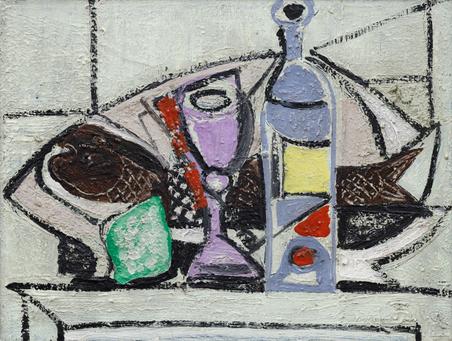Lot #142

Emil Filla (1882–1953)
White Still Life
Estimate: 2,000,000 CZK - 4,000,000 CZK
1,800,000 CZK
Distinctive and very visually appealing, this work consciously builds on Filla’s legendary white still life period from the turn of the 1920s and 1930s and captivates at first glance with its interesting composition and artistic approach, particularly its masterful handling of dense white paste. Though the work was created not long after Filla’s return from the Buchenwald concentration camp, it shows that he managed to find a new energy and élan. Moreover, the intervening years and experiences only deepened his confidence and rich, expressive vocabulary rooted in strong foundations in painting and drawing. Indeed, the painter was unafraid to look to the past, work with an uncommon economy of expression and create a painting that references a happy period of his life. Thus we have before us a very compact and impactful painting composed of several small objects rendered in a boldly expressive and original palette that synthesises all the painterly finesse of his prewar work and goes even further. A black, geometric line emerges from the solid white, almost sculptural background (on which the author’s signature is subtly inscribed), defining the table and setting that frames the individual objects. In front of a dark fish lying on a plate are placed three objects, each of which bears a colour – a green lemon, a violet glass, and a blue bottle. Though the colour palette is austere, individual colours make a clear impression and enhance the white background, on which Filla set great importance. The work was presented at Filla’s essential postwar exhibition at Galerie Vincence Kramáře (Emil Filla: Still Lifes 1911 –1951, Prague, 7 January – 18 February 1968, cat. no. 34). The authenticity has been verified by the Filla Foundation and the painting will be included in a forthcoming inventory of works. It originates from a high-quality Moravian collection. Assessed in consultation with PhDr. R. Michalová, Ph.D. and Mgr. T. Mátl Donné. The expert opinion of PhDr. K. Srp is attached: “White Still Life demonstrates that even later Filla possesses a great artistic value that is awaiting recognition. The still life merely presents him with a stimulus for his own meditation on the world of visual forms. [...].”



